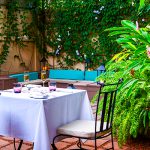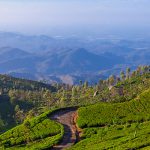INSIDE SRI LANKA A monthly insider’s report by Royston Ellis, February 2015.
Greetings to fellow travellers and visitors to Sri Lanka with train news.
By train to Jaffna
Following the election of a new president in Sri Lanka in January, several changes are obvious to the frequent visitor to the island. One of interest to travellers is the lifting of restrictions on foreigners going by train to Jaffna. For the first time in nearly three decades, foreign passport holders can travel freely the length and breadth of the entire country, just as Sri Lankans do.
I took advantage of this new freedom by catching a train to Jaffna and then on to the island’s northernmost railway station, Kankesanturai, still being rebuilt.
There are three daily trains and one night mail from Colombo Fort to Jaffna. The timetable can be seen on: http://eservices.railway.gov.lk/schedule/homeAction.action?lang=en
Although it leaves Colombo Fort very early, at 5.50am, I chose the air-conditioned, all 1st Class train, number 4021, with scheduled arrival in Jaffna at noon. The train actually starts from Mount Lavinia at 5.10am and returns every day with arrival at Colombo scheduled at 8.00pm. Seats can be reserved at any major station in advance and the fare per person is Rs1,500 (one-way) for the 393km journey.
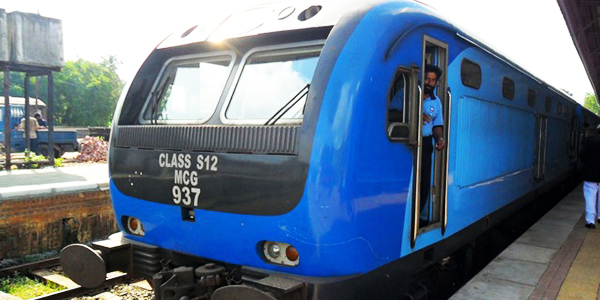
The train is hauled, and pushed, by Class S12 power set locomotives, imported in 2012-2013. There are six passenger compartments, labelled A to F, and one restaurant car, which isn’t functioning so passengers need to take their own snacks and drinks. A notice cautions: “No Smoking. No Liquor.”
The seats, in pairs, can be reversed to face the way the train is going or to make a companionable foursome for friends or family travelling together. Seats to be avoided as they are at the end of the carriage and have reduced leg room are numbers 1, 2, 3 & 4, and also 41, 42, 43 & 44. If you hate the intrusive sight and sound of movies while travelling, then avoid the seats in the centre of each carriage (numbers 22 & 24) which are under the centre-aisle screen.
Each carriage has two loos (one western style, the other eastern type) which are kept clean. All the windows, including those in the loos, are locked, and the passenger doors at the end of each carriage are also kept locked when the train is in motion. If you want the dust, the breeze, the smells and the real atmosphere of tropical rail travel, then the Yal Devi (No. 4001) leaving Fort at 7.15am and the Intercity (No. 4017) departing at 11.50am, with 1st, 2nd & 3rd (now known as E for Economy) Classes, are the trains to catch. But they are not as comfortable.
The train I caught made only two stops en route (apart from when it waited in the sidings for on-coming trains on the single track to pass), at Anuradhapura and Killinochchi. The view from the window gradually changed from rugged verdure to arid plains as we progressed north. I was thrilled to see a peacock, disturbed by the train, lumbering into flight from a paddy field to perch precariously on a branch.
Jaffna shopping
The main market in Jaffna is a magnet for travellers in search of local products. We bought a bright basket made of dried and dyed palmyrah palm fronds in which to carry packets of sundried Jaffna prawns (great in a curry) and the locally-made cylindrical moulds for making pittu (a long, round rice concoction of steamed rice flour and coconut that is a Jaffna speciality). Made of bamboo and coir some of the moulds can be seen in the foreground of this photo.

Jaffna is changing rapidly. The old crocks that used to serve as taxis have been replaced by the ubiquitous three-wheelers, or “tuk tuks” as they are called with a name borrowed from Thailand. The driving is crazy with daredevil flare. Building is booming; a new supermarket square has been built and is flourishing, while another building, rumoured to be a hotel, is under construction next door.
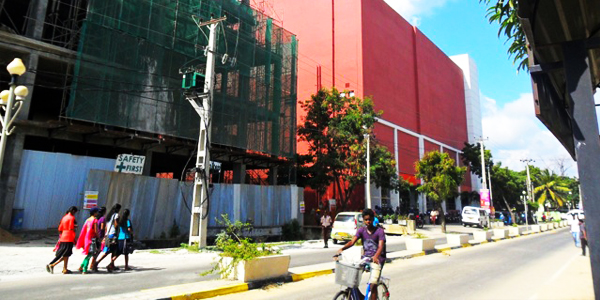
However, Jaffna is still a very different Sri Lanka. It’s traditional but fast and furious, although when people do stop to share pleasantries it is with a sense of respect, not the rampant commercialism sometimes encountered in tourist traps in the south.
To KKS
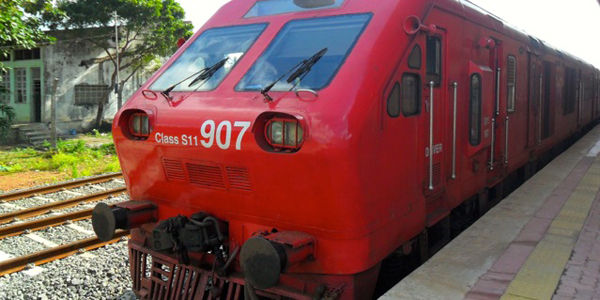
After spending the night in Jaffna, I had the idea of catching a local passenger train from Jaffna to Kankesanthurai (KKS). The 3rd class ticket cost Rs30 for the 18km journey. To my astonishment, hordes of children, parents and grandmothers had decided to do the same thing. It was Sunday morning and they were travelling, like me, just for the sake of it, as the railway link to KKS had only just been opened after 30 years. The kids were thrilled and the grandparents awed by seeing cultivation (beetroots, grapes and tobacco) and bombed buildings being restored.
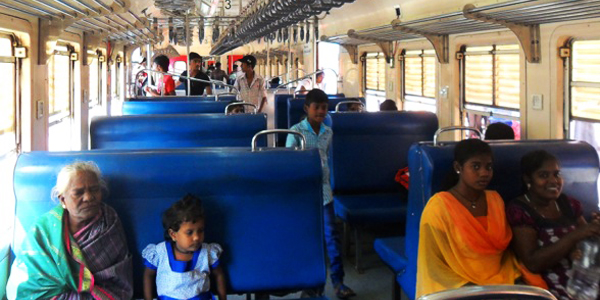
At KKS, everyone got out of the train, rushed to the ticket office and joined a scrum to buy a ticket to ride the same train back to Jaffna. We did the same, spending only 20 minutes enjoying the view of the sea and the breeze. But it was worth it as I proved that it is now possible to travel by train from the southernmost station of Matara to the northernmost one.

Railway Sesquicentenary.
There is a dramatic representation of the past of the 150 years of Sri Lankan railways (commemorated on 27 December 2014) in the courtyard of the back entrance of Colombo Fort Railway Station.
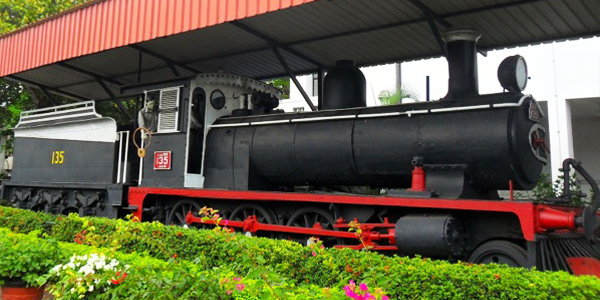
There this steam locomotive built in 1908 has been given a new coat of paint and the addition of two crew members (actually dummies) depicting the moment of transfer of the hoop with purse from engine diver to station master that is an essential part of the ancient signalling system still in use on single tracks.
A British resident of Sri Lanka since 1980, Royston Ellis is an erstwhile beat poet and author of The Bradt Guide to Sri Lanka. His weekly blog is available by free subscription from www.roystonellis.com



